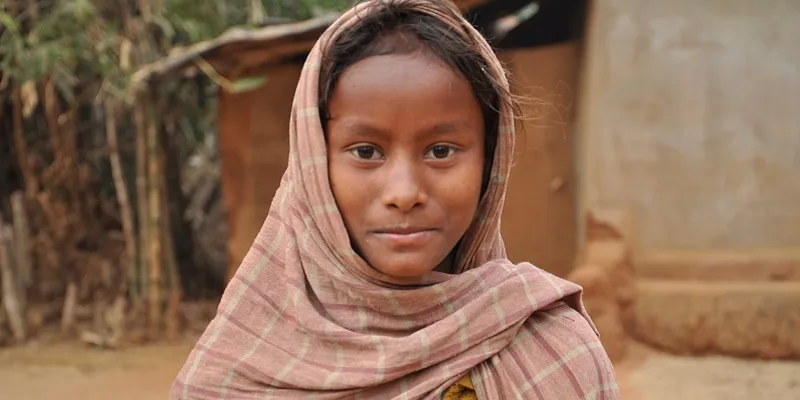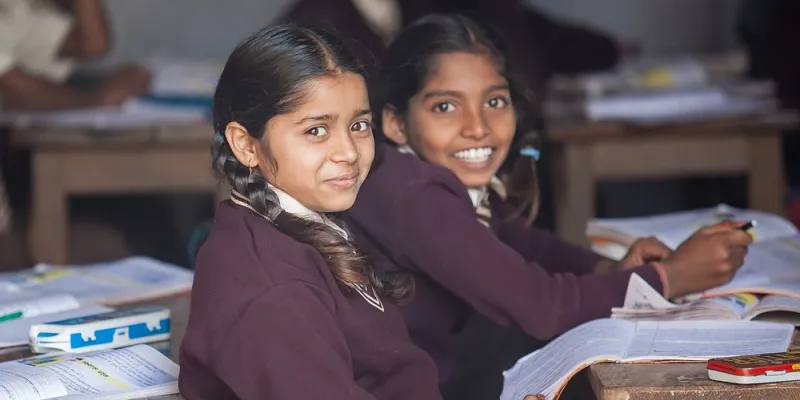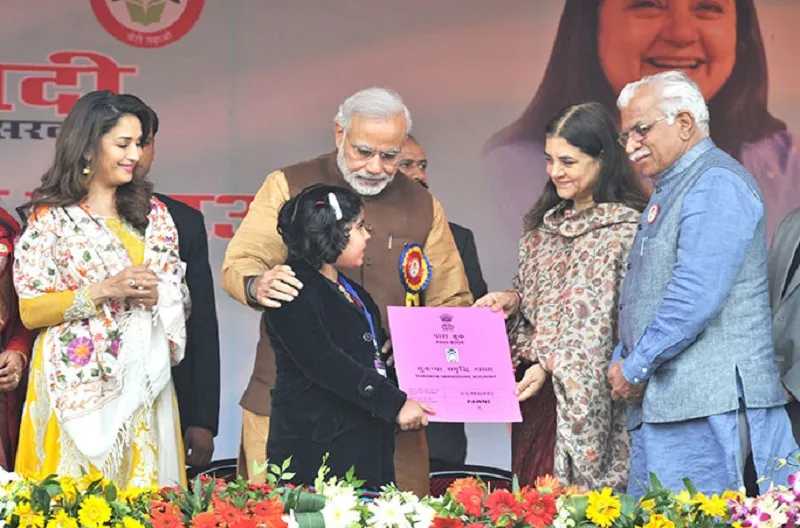No country for women? India’s child sex ratio currently at historic low
On the eve of International Day of the Girl Child, we trace the 100 years long history of measuring sex ratio in India.

“Pay 5,000 rupees today and save 50,000 rupees tomorrow” – this was a slogan used to promote a sex determination centre in Amritsar, Punjab, forty years ago. In the 1970s, when dowry was rampant, these centres promised a ‘way out’ for parents who could choose to abort if the foetus was female. They did not have to wait until the birth of the child to decide what to do with it.
When AIIMS introduced amniocentesis in 1974 to detect abnormalities in a foetus, it might not have foreseen the test being used to determine the sex of a child. However, unfortunately, female foeticide was a bane of technology that replaced female infanticide for people who could afford the sex determination centres.
Female infanticide in British India
To better understand the social realities around sex ratio, we have to turn the wheel back a little, to British India in the 1870s. The first act to curb the heinous social practice — Infanticide Regulation Act — was passed in 1870, after repeated lobbying by activists. The act punished the perpetrators with rigorous punishment ranging from transportation for life to death penalty. Despite the fact that the community as a whole took part in the crime, mostly it was the women who were tried under the law. For instance, from 1870 to 1880, 16 mothers were sentenced to death and more than 100 were transported for life. The act also helped set up the Infanticide Committee to record the number of births and deaths in a locality.

Records from those times present alarming data — there was one girl for more than 100 boys in some regions. Midwives were roped in to help the authorities with reducing female infanticides. The law was efficient in curbing infanticide at least to an extent, as the census data shows that by 1901 there were 972 females for 1,000 males.
Problems with the first law against infanticide
The law, however, was not efficient for a lot of reasons. People began finding loopholes to deceive the colonial government — they would send pregnant women to parts of the country where the law was not applicable. They would even pass off the death of a girl child as that of a boy.
The British Raj, which did not comprehend the social realities of India or the evil practice of female infanticide in its entirety, assumed the practice of infanticide to have become extinct after the enactment of the law. And gradually, more and more villages/areas were exempted from the law. For instance, when the law was initially framed, more than 1,000 villages were brought under the law (villages where British government believed infanticide was being practised). But in the beginning of 1900s, only 264 villages were under it. As a result, overall sex ratio also started plummeting. In 1941, few years before independence, it stood at 945 females for 1,000 males.
Child Sex Ratio – After Independence
There is no data on child sex ratio (number of females per thousand males between 0-6 years) before independence. But After independence, the data from 1961 shows a disturbing child sex ratio. For close to three decades after independence, with the task of building world’s largest democracy, improving the sex ratio took a back seat and it kept declining steadily. That, along with lack of awareness, ensured the undisturbed flourishing of sex determination centres. This meant that, child sex ratio that was at 976 in 1961, saw a steady decline to 964 and 962 in the 1971, 1981 census, respectively.
Act to curb sex selection
In 1985, women’s groups and ethical science activists came together to form the Forum Against Sex Pre-Determination and Sex Pre-Selection (FASDSP). The forum urged the government to pass a law to end the menace. However, it took almost ten years for that law to be formulated and come into existence. By the time the collective efforts of FASDSP could bring social action and abolish the disturbing trend in 1994, the damage had been done.
Plummeting numbers despite the law
The Pre-Conception and Pre-Natal Diagnostic Techniques (PCPNDT) Act, enacted in 1994, banned the practice of pre-natal sex determination, penalised erring radiologists and gynecologists who championed the misuse of amniocentesis. However, the act was not effectively implemented until 2003, when it was amended and given more teeth.

Unfortunately, despite the existence of this act, the child sex ratio dropped drastically from 945 in 1991 to 927 in 2001, according to Census of India statistics.
The most recent data collected by the 2011 census is a testament to the fact that selective sex abortions continue unabated in spite of stringent legislations and social reforms being in place. The child sex ratio further took a hit and tumbled to an upsetting average of 914 females born per 1,000 males, making it the lowest since independence.
According to the 2011 census data, the top scorer in child sex ratio is Mizoram (971), followed closely by Meghalaya (970) and Chhattisgarh (964). However, the list of states that did worse is no surprise — Haryana (830) which also tops the list of poor overall sex ratio, followed by Punjab (846), and the violence-ridden valley of Jammu and Kashmir (859). The 2011 data also reiterates that only six states and two union territories have registered an upward trend in terms of child sex ratio since 2001.
Missing girls in Indian metros
Data analysed by Kanya.Life, a data-driven initiative to prevent female infanticide in India, revealed a few shocking statistics that are indicative of regressive practices, even in urban areas and megacities. According to their reports, Delhi tops the list of 30 cities with the most adverse difference between boys and girls aged between 0-6 years (with 86.8 thousand more boys than girls). The data examined by the website also states that only 6 out of 500 cities in India have more girls than boys.
A latest report titled Youth in India put together by Ministry of Statistics and Programme Implementation has projected that India’s skewed sex ratio is set to further dip by 2031. Based on data from Census of India and World Bank, the report estimates that the overall sex ratio will drop to 898 girls from 940 (2011), regardless of the rising literacy levels and income rates.
So, why is the battle of survival so unjust for India’s girl children? Preference for sons, neglect of girl children leading to higher mortality rates in childhood and female infanticide are among the most frequently cited reasons for this menacing trend that continues.
Beti bachao, beti padao, but is anyone listening?
“India's sex ratio is 1,000 boys for 940 girls. Who creates this disparity? It isn't God. Don't fill your coffers by sacrificing the mother's womb. People feel that sons will take care of them when they are old. But I have seen aged parents in old-age homes. I have seen families where one daughter serves parents more than five sons,” said Prime Minister Narendra Modi in his Independence Day address in 2014.

Modi’s ambitious Beti Bacchao, Beti Padhao which took off in 2015 aimed at creating better awareness among people with regard to welfare schemes intended for girls. Earlier this year, the budget allocated for this progressive, flagship programme was also doubled.
However, according to the report of the Parliamentary Standing Committee on Human Resource Development, more than 90 percent of allocated funds for the programme from last fiscal year still remain unused. Such findings only suggest that it is not a mere cultural backlog that makes the situation unfavorable for girls. A lack of strong political will, coupled with inept implementation of policies at grass-roots level, is also to be blamed.
It is disheartening that in the world's largest democracy, we are still celebrating the first woman combat officers, woman pilots, and woman drivers. Though they are all proud achievements for a country whose history is burdened with the subjugation of women, we are far behind in ensuring an equal society which is fair to our girls.







